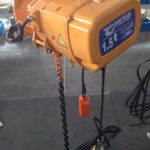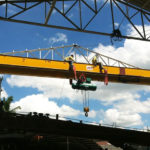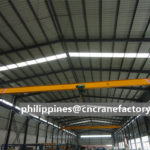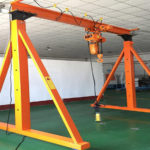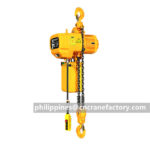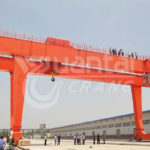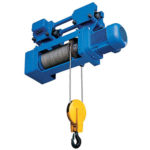The manual Chain Hoist is also called chain hoist, chain hoist, heavy duty, manual hoist. It is a simple to use and easy to carry manual hoist, also known as “chain hoist” .

It is suitable for short-distance lifting of small equipment and goods. The lifting weight generally no more than 10T, and the maximum can reach 20T. The lifting height generally less than 6m. The outer shell of the chain hoist is made of high-quality alloy steel, which is strong and wear-resistant and has high safety performance. When the chain hoist lifts a heavy object, pull the hand chain and hand chain wheel clockwise to rotate, and pull the hand zipper bar counterclockwise when descending. The brake seat is separated from the brake pad. The ratchet wheel is stationary under the action of the pawl. The five-tooth long shaft Drive the hoisting sprocket to run in the opposite direction, so as to lower the weight smoothly. The chain hoist generally uses a ratchet friction plate one-way brake, which can brake automatically under load, and the pawl meshes with the ratchet wheel under the action of the spring to make the brake work safely.
It has the characteristics of safety and reliability, easy maintenance, high mechanical efficiency, small pull force of the bracelet, light weight, easy to carry, beautiful appearance, small size, and durability. It is suitable for factories, mines, construction sites, docks, docks, warehouses, etc. Installing machines and lifting goods, especially for open-air and no power operations, shows its superiority.
The main parts of the chain hoist are made of alloy steel. The chain adopts 800Mpa high-strength lifting chain. The material is generally 20M2. The chain is medium-frequency quenching heat treatment, low wear and corrosion resistance; high-strength hook, the material is generally alloy steel, forged The striking hook design ensures slow lifting to prevent overload; it complies with European CE safety standards


How to install the manual hoist?
Inspection and preparation before installation:
1. After the electric hoist is transported to the installation site, accept it according to the packing list, and carefully check whether there is any damage or missing parts during the transportation process
2. Remove oil stains or anti-rust paint on the wheel treads of the operating mechanism;
3. Understand the installation site.
Prepare to install facilities:
The electric hoist running track is I-steel, and the wheel tread is conical. The track model must be within the recommended range, otherwise it cannot be installed. Please check carefully before installation. When the running track is H-shaped steel, the wheel tread is cylindrical. Please check carefully before installation. During installation, loosen the locking nuts of the connecting bolts between the running mechanism wall panels to separate the left and right wall panels of the electric hoist.
Install the appropriate number of adjusting pieces on the connecting bolts on the inner side of the wallboard wheels, the left and right numbers are equal, to ensure that there is a gap of 3-5mm between the wheel flange and the rail flange, and the extra adjusting pieces are placed on the outside of the wallboard, and then the suspension trolley The electric hoist is installed on the track and the nut is tightened. The degree of tightening is based on the fact that the wheels on both sides of the I-beam or H-beam do not tilt outwards. The suspension trolley-type electric hoist adopts four wall panels.
In order to ensure that the four wheels touch the ground at the same time, the wall panels must be swung during installation to ensure that the four wheels touch the ground at the same time and tighten the nuts. The degree of tightening is based on the fact that the wheels on both sides of the I-beam or H-beam are not tilted outward as the standard. At the same time, knock in the wall plate pivot and tighten the lock nut. 2.2 Electrical installation The electrical wiring personnel must hold an electrical work certificate to perform external wiring according to the use of the electric hoist or the matching situation of the hoist while ensuring that the power supply is disconnected.
2. Installation precautions: In order to ensure that the electric hoist does not derail when running to the two ends of the track or to prevent collision and damage to the body, elastic buffers should be set at both ends of the track;
When installing the electric hoist, check whether the plug used to fix the wire rope is loose. A grounding wire should be set on the track or its connected frame. The grounding wire can be a bare copper wire of φ4~φ5mm or a metal wire with a cross-section of not less than 25mm2. The ground resistance of all power circuits and control circuits of electrical installations shall not be less than 10000Ω per volt of working voltage.
